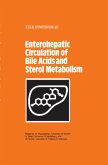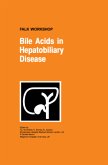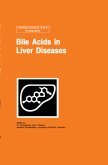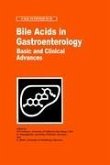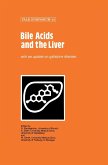Beginning in 1970, the International Bile Acid Meeting has taken place every two years and each time new progress in our understanding of the complex role of bile acids in many metabolic processes of the liver and the intestine has been revealed by a selected group of leading scientists from all over the world.
Although originally mainly physiological data on bile acid synthesis and transport were emphasized, and later on also the therapeutic benefit of bile acids in gallstone disease and cholestasis was discovered, we have come now to the molecular biology and genetic era with major discoveries in transport defects and related diseases. This book is the proceedings of Falk Symposium No. 120, held in The Hague, The Netherlands, on October 12-13, 2000 - the 16th International Bile Acid Meeting.
One of the main discoveries recently has been the identification of nuclear receptors for bile acids, which gives them a much broader perspective than previously anticipated. It even suggests that bile acids can regulate their biosynthesis and enterohepatic circulation transcriptionally. It will therefore not be surprising that this topic, together with the molecular regulation of cholesterol 7alpha-hydroxylase and cholesterol homeostasis, has a dominant place in these proceedings. Another important topic is the progress in our molecular understanding of hepatic (both at the basolateral and canalicular sites), cholangiocytic and intestinal bile acid transport processes. Further insights into genetic defects causing cholestasis or intestinal malabsorption in animal models and in human diseases are also discussed by a number of well-known authors. Finally the last section deals with new findings on the role of bile acid therapy in cholestatic syndromes or chemoprevention and with the potential benefit of bile acid inhibitors. All contributors provide an update on the most recent developments in their field.
Although originally mainly physiological data on bile acid synthesis and transport were emphasized, and later on also the therapeutic benefit of bile acids in gallstone disease and cholestasis was discovered, we have come now to the molecular biology and genetic era with major discoveries in transport defects and related diseases. This book is the proceedings of Falk Symposium No. 120, held in The Hague, The Netherlands, on October 12-13, 2000 - the 16th International Bile Acid Meeting.
One of the main discoveries recently has been the identification of nuclear receptors for bile acids, which gives them a much broader perspective than previously anticipated. It even suggests that bile acids can regulate their biosynthesis and enterohepatic circulation transcriptionally. It will therefore not be surprising that this topic, together with the molecular regulation of cholesterol 7alpha-hydroxylase and cholesterol homeostasis, has a dominant place in these proceedings. Another important topic is the progress in our molecular understanding of hepatic (both at the basolateral and canalicular sites), cholangiocytic and intestinal bile acid transport processes. Further insights into genetic defects causing cholestasis or intestinal malabsorption in animal models and in human diseases are also discussed by a number of well-known authors. Finally the last section deals with new findings on the role of bile acid therapy in cholestatic syndromes or chemoprevention and with the potential benefit of bile acid inhibitors. All contributors provide an update on the most recent developments in their field.



